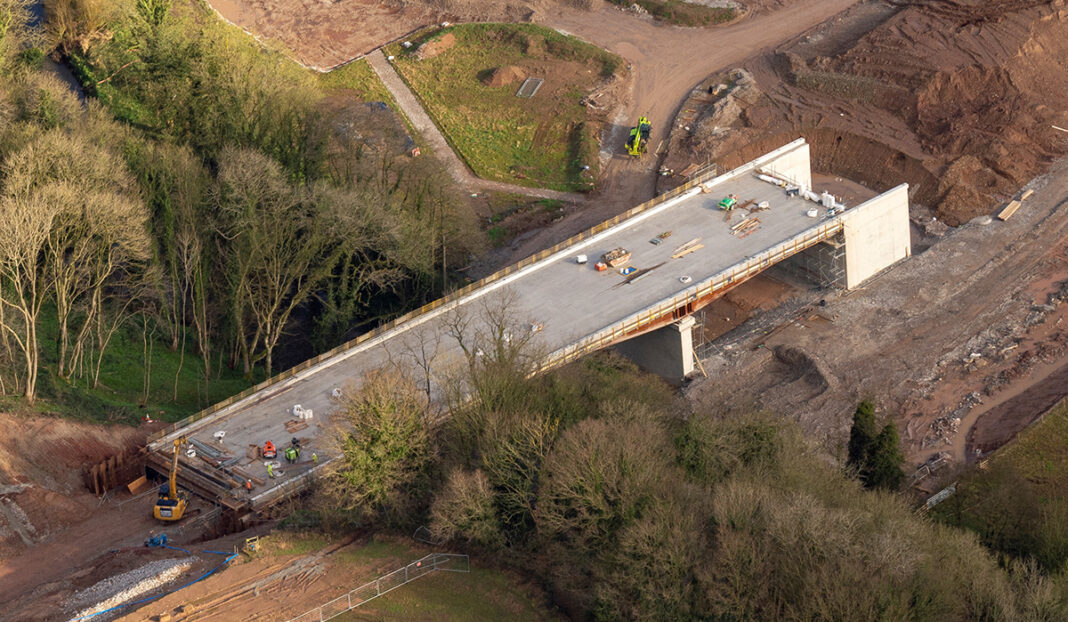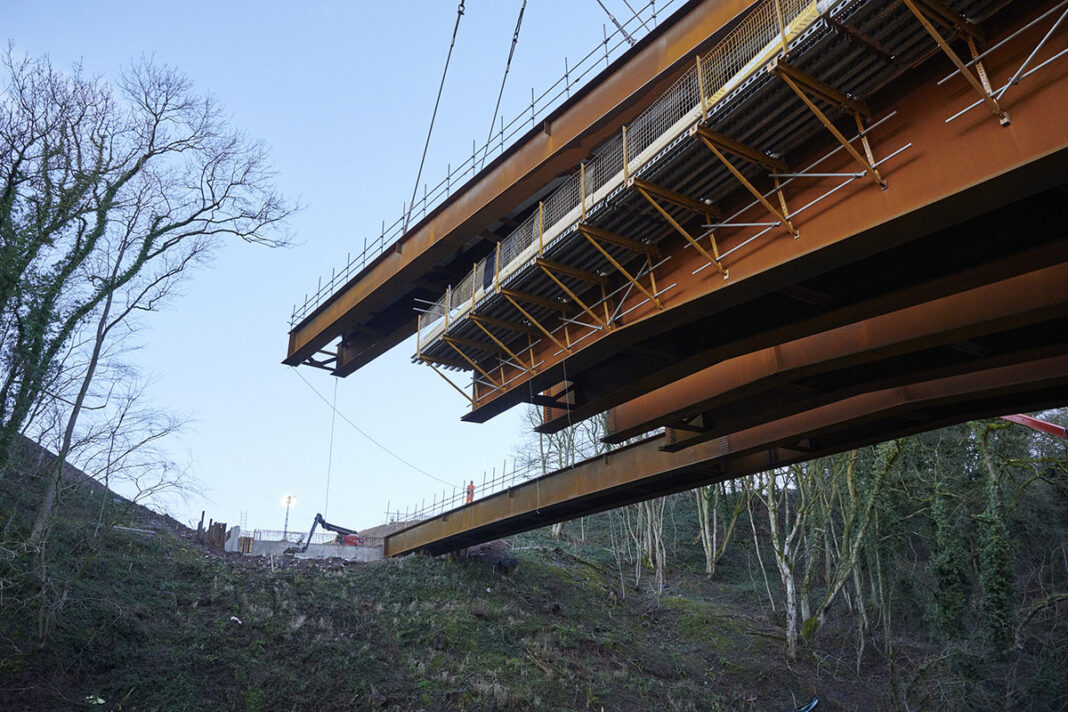
CCL tells Project Scotland about its role in a project to reduce the number of vehicles on Congleton’s roads and boost the local economy by making the town more accessible
THE Cheshire town of Congleton has seen its narrow streets overwhelmed by traffic over the past few years, leading to Cheshire East Council proposing a 5.5km link road to create a bypass designed to free the town centre of through-traffic.
The £90 million Congleton link road will join the A534 Sandbach Road (to the west of Congleton) with the A536 Macclesfield Road (to the north of the town). Contractor Graham is responsible for delivering the five-phase project, which includes two bridges: one to enable the diverted traffic to cross the River Dane and another over local B-road, Giantswood Lane.
The company worked with CCL, a specialist in engineered solutions for structures, on the bridge elements of the scheme, with CCL providing a variety of bridge bearings to meet the requirements of the bridge design and topography.
The River Dane crossing is a two-span bridge of composite construction, with reinforced concrete abutments on the west and east banks of the river and a single concrete pier on the east bank, all constructed with 1,200mm piles. The permanent formwork for the bridge was pre-cast, but the abutments were cast in-situ, beginning with the pier prior to assembly of the deck. The spans are composed of steel girders, installed first from the east abutment, then from the west and tied together before a carefully sequenced concrete pour, aligned to the optimum loading conditions for the steelwork, to create the bridge deck.
The spans are of unequal length, with a 62m span crossing the water and a 25m span completing the path of the bridge from the pier located on the east bank to the eastern abutment.

There is a high embankment on the western side of the river and, although the Graham team cut into this to construct the western abutment, there is a vertical difference of 20m between the west and east sides of the river, which has resulted in the 62m span being constructed at a 1/20 gradient.
The bridge has been designed to provide a floodplain, allowing for worst case scenario flood planning, because the River Dane experiences flash flooding during heavy rainfall.
The original proposal included an additional pier on the west bank to support the larger span, but the challenges of the topography and water table prompted a redesign. The steep bank that descends from the western abutment to the location earmarked for the western pier created issues with accessibility. Erosion of the riverbank was also a consideration. To overcome issues created by this topography, the bridge design was altered to the single pier on the east bank. This reduced the temporary works, aided the build programme and helped to manage the level of risk.
CCL designed and manufactured the bridge bearings to meet the loads and forces stipulated by the project’s structural engineers and the change in design strategy altered the requirements for the bearings. The revised single pier design utilises the weight in the substructure of the east abutment to support the span, so the deck was redesigned to take the moment, which is greatest over the pier on the east bank, and transfer it through the east abutment and into the foundations. The span was temporarily restrained at the eastern abutment during construction, before being cast permanently into the diaphragm, removing the need for any bearings in this location.
Although the deck is fixed at the eastern abutment to transfer the load from the span through the concrete structure and foundations, this does not affect the rotational and longitudinal movement enabled by the bearings installed at the western abutment and the pier. In these locations, along with a movement joint at the western abutment, the bearings play a role in allowing movement through the structure and in absorbing the vertical load of both the span and the vehicles that will use the crossing.
At the western abutment, where the span is designed to slope from the high embankment down towards the pier and the lower embankment on the other side, five free-sliding spherical bearings were installed to allow 2293kN of vertical load and movement in all directions. These bearings were designed with a pre-set angle of 0.80 on the top plate to allow for the gradient of the span above and enable horizontal movement and rotation in all directions. A single guided spherical bearing was also installed on the western abutment, capable of absorbing both 2251kN of vertical load and 462kN horizontal load, while allowing movement in one direction only. This bearing was also designed with a pre-set angle of 0.80, aligned to the angle of the span. It allows articulation of the bridge in response to seasonal longitudinal contraction and expansion of the steelwork by as much as 100mm, while preventing any perpendicular movement that could damage the bridge structure.
For the pier, CCL designed and supplied five free-sliding pot bearings, which will take 5816kN in vertical load and allow movement in all directions. One guided pot bearing, capable of taking both 5733kN of vertical load and 886kN horizontal load was also installed here and this has been designed to allow movement in a single direction.








